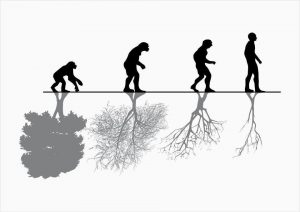There is one common mechanism of causality, with respect to an urban population that – owing to increasing rural-urban migration – is shifting along virtually every axis- the Environment.
The Environmental issue is like a rope: at first it seems to be one thing, one entity, until you start teasing the ends, and then it begins to fray. And perhaps this is its most challenging aspect: there’s no one problem, which means there’s no one solution. Factors combine and connect: forces intersect and amplify, and people all around the world, regardless gender, caste and creed are affected. Today, more than ever before there is a need for extensive discourse on environmental affairs that plague not only us, but also future generations to come.
But why are we suddenly so aware of environmental issues? Let’s be honest, just for a second. Do we really care if the Balinese Tiger sub specie has gone extinct? Does it perturb us in the slightest, to know that the glaciers in the Himalaya’s are melting? I didn’t. You probably didn’t either. But our purposeful ignorance, can’t help us when we get sick. When someone we love falls sick.
For 3 years, I worked in a slum area in New Delhi. A curiously isolated enclave, it is a land without time, populated by rickshaws, street dogs, and narrow winding lanes. The vicinage was plagued with disease, delinquency and despair. The stench of urination and unbathed bodies would remain in my clothes as a staunch reminder even after I left. Open sewers served as a cesspool for multiple diseases, and as a swimming pool of sorts for the children that lived there. Cows, pigs and dogs lived in close contact with the people, there was open defecation and toxic garbage. Disease lingered in the air, just waiting for a chance to strike. I grew close to a girl, she was unsure of her age, but no more than 17 at the time we met. She was a wife, a mother, and a victim. A victim of our apathy, a victim of our ignorance, a victim of the disaster we are all responsible for. The water they got there was infected by pollutants, and her baby contracted diarrhea. Uneducated and unaware, she lost her child. Her husband works as causal labour in a cement factory, and has carcinoma of the lungs. Almost everyone in this tiny slum is living with TB or has latent TB. Yes, some might argue that adequate treatment might have saved her baby, and yes it might have. The husband should be wearing a mask and, the government should have more effective prevention strategies. If you’re asking these questions, I’d compare you to a goldfish in a bowl. Putting forward questions, only to do nothing about them, refusing to accept the reality that is. Why did the child have to fall sick in the first place? Why are people living in such hell holes?
The lack of access to potable water, living in a toxic dumping ground and being subjected to every kind of pollutant is a reality that exists for many. It’s the best option, when no alternative exists. This made me aware of the dichotomy that exists in my society, and society’s globally. A certain segment of society chooses to be ignorant of the environmental issue, yet contributes the most to its detriment. The other segment bears the repercussions, and they are shunned in oblivion. However, there isn’t much time before both segments face the reality of the latter- and then it will be too late. We need to understand and show the correlates of health and the environment beyond a statistical abstraction. While basic Economics dictates, that correlation does not necessarily entail causation- it is a fact, that when Health and the environment are concerned it is.
I look around me now, almost ever other person I know is sick. Sick with a disease that is preventable. A disease they wouldn’t have contracted, had we stopped sweeping the environmental issues under the carpet, a long time ago.

 Works Cited
Works Cited
